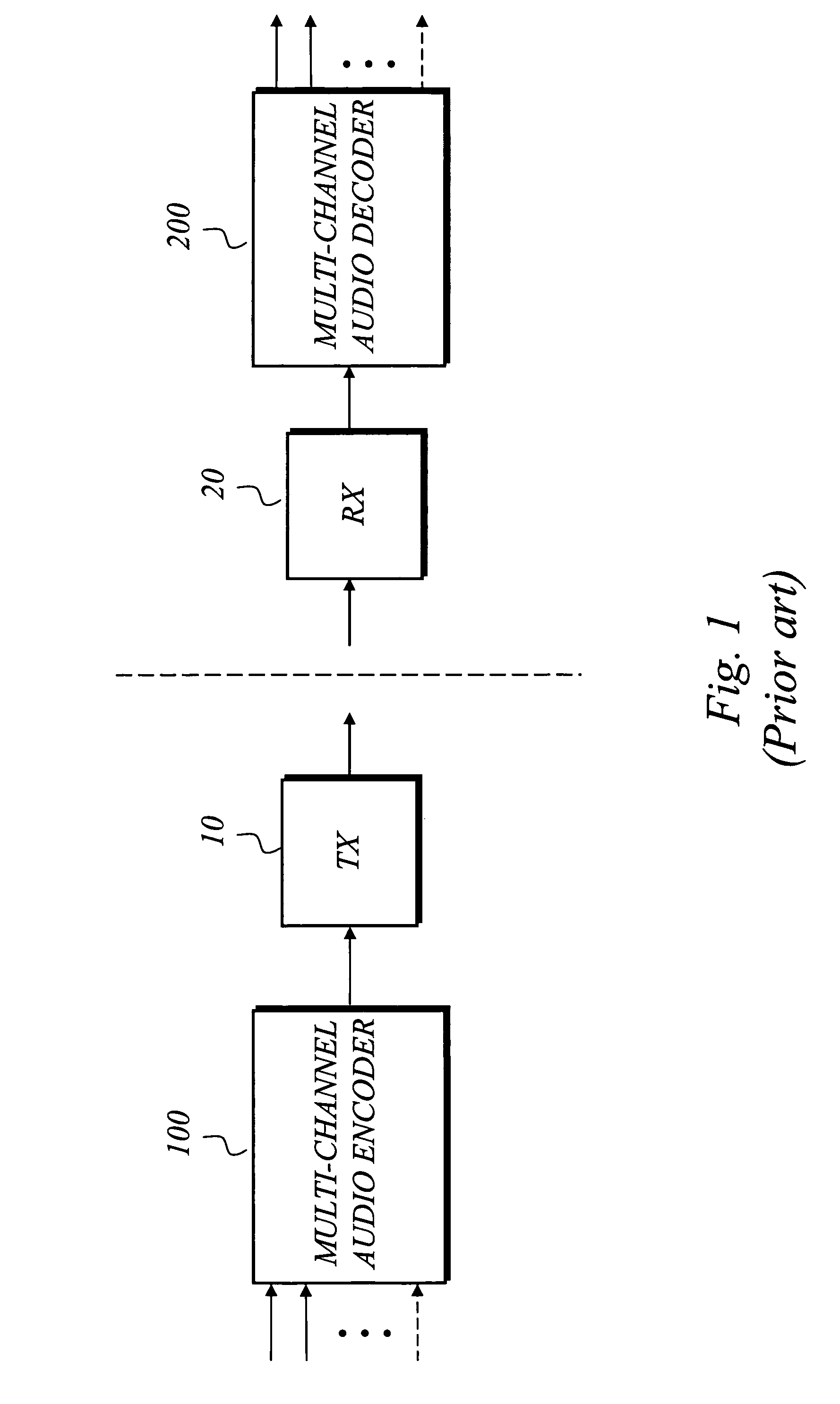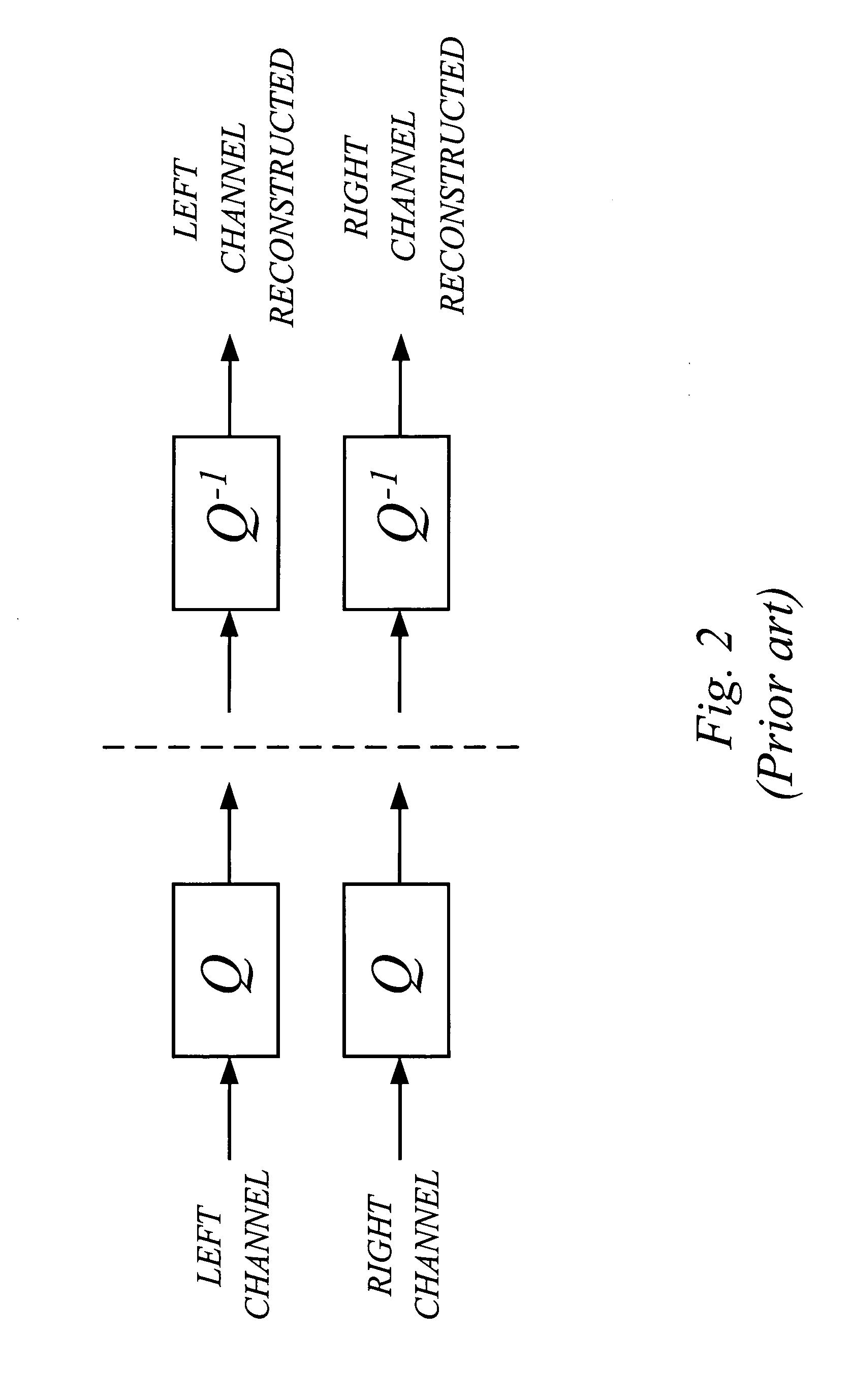Filter smoothing in multi-channel audio encoding and/or decoding
a filter and multi-channel audio technology, applied in the field of multi-channel audio encoding/decoding, can solve the problems of bcc being computationally demanding, generally not perceptually optimized, and affecting the quality of the audio, so as to reduce the energy of the filter
- Summary
- Abstract
- Description
- Claims
- Application Information
AI Technical Summary
Benefits of technology
Problems solved by technology
Method used
Image
Examples
Embodiment Construction
[0053] Throughout the drawings, the same reference characters will be used for corresponding or similar elements.
[0054] The invention relates to multi-channel encoding / decoding techniques in audio applications, and particularly to stereo encoding / decoding in audio transmission systems and / or for audio storage. Examples of possible audio applications include phone conference systems, stereophonic audio transmission in mobile communication systems, various systems for supplying audio services, and multi-channel home cinema systems.
[0055] For a better understanding of the invention, it may be useful to begin with a brief overview and analysis of problems with existing technology. Today, there are no standardized codecs available providing high stereophonic or multi-channel audio quality at bit rates which are economically interesting for use in e.g. mobile communication systems, as mentioned previously. What is possible with available codecs is monophonic transmission and / or storage ...
PUM
 Login to View More
Login to View More Abstract
Description
Claims
Application Information
 Login to View More
Login to View More - R&D
- Intellectual Property
- Life Sciences
- Materials
- Tech Scout
- Unparalleled Data Quality
- Higher Quality Content
- 60% Fewer Hallucinations
Browse by: Latest US Patents, China's latest patents, Technical Efficacy Thesaurus, Application Domain, Technology Topic, Popular Technical Reports.
© 2025 PatSnap. All rights reserved.Legal|Privacy policy|Modern Slavery Act Transparency Statement|Sitemap|About US| Contact US: help@patsnap.com



